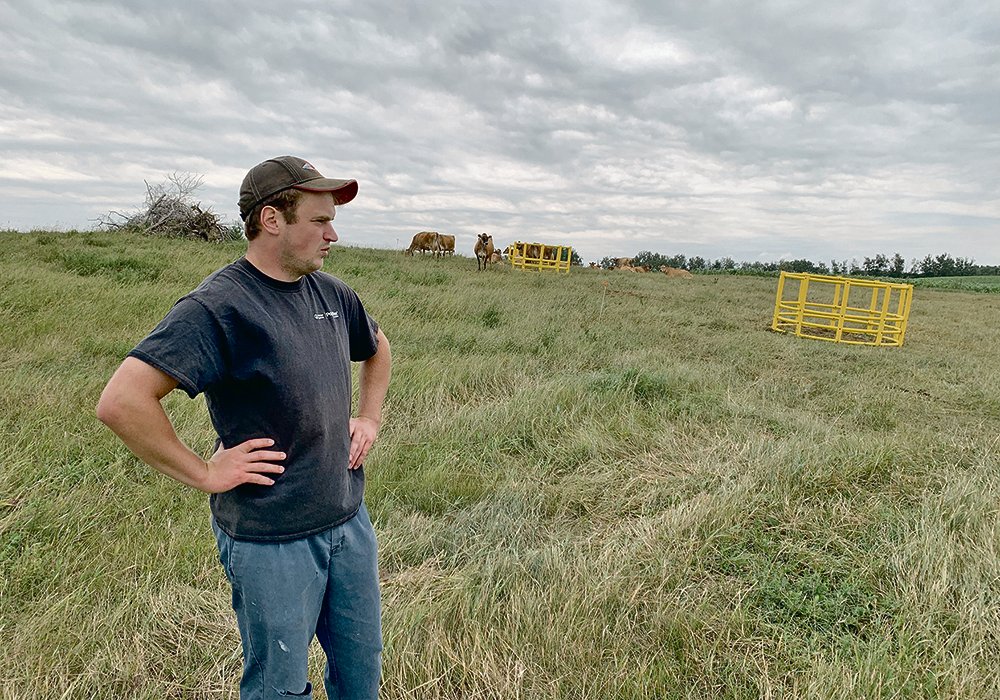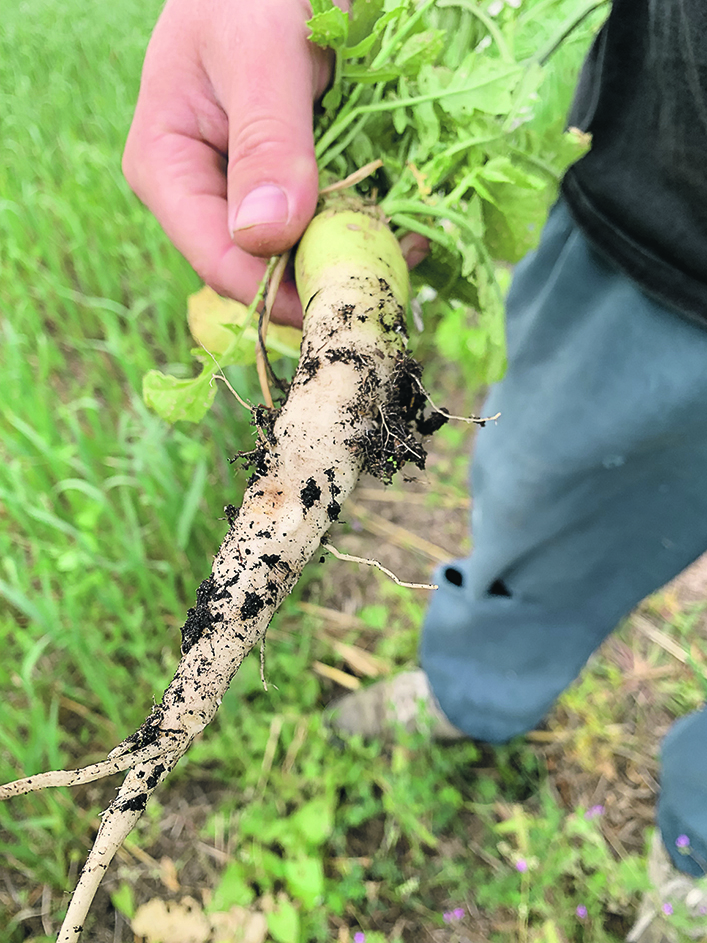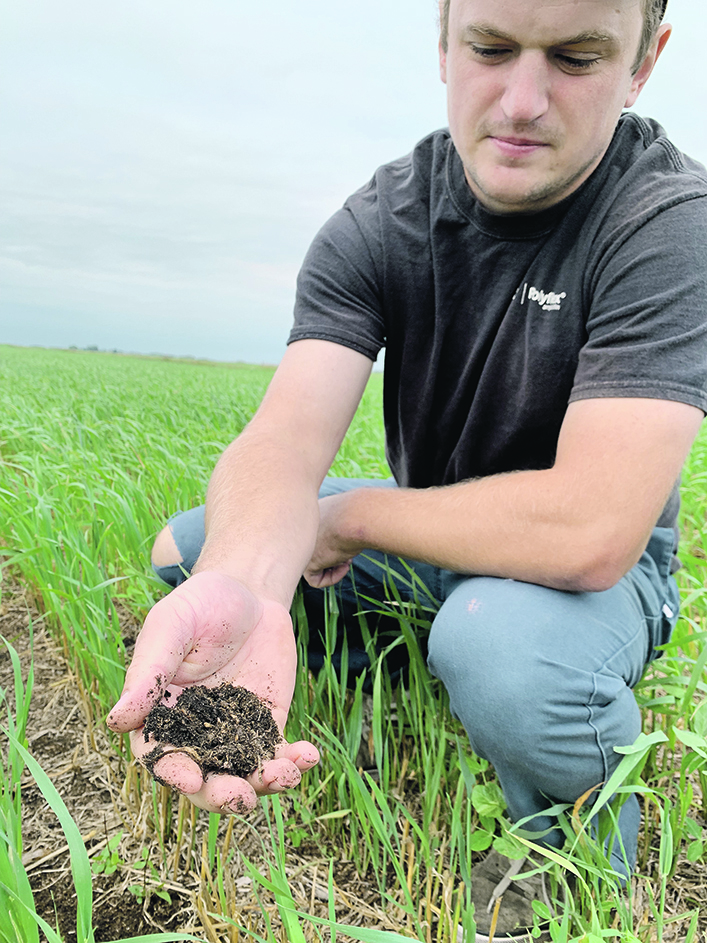Farm diversifies while improving environment

Improving the Prairies: Sustainable farm cuts costs, boosts margins with strategic changes to planning and operations
Editor’s note: This story is part of an ongoing series that looks at how many farmers are attempting to preserve their land, water and habitat while increasing profits.
CLANWILLIAM, Man. — Something is making the forages grow better on the Smith farm this year, despite the drought: a lack of wire worms.
After a couple of years of disappointing yields, the family fingered the insects for the problems and it took action, using treated seed and, for now, eliminating the problem.
It’s worked, but this dairy-farming family doesn’t want to use expensive inputs for the long run.
Other stories in this series:
It’s not an ideological position. The Smith family embraces modern agricultural science. But for a small herd in an area in which it’s hard to expand, they believe managing costs and yield volatility is key to their ability to prosper.
“It’s mainly economic,” said Sean Smith, who farms with his parents Steven and Marie in the rolling wooded country nearing Riding Mountain National Park.
“We’re a pretty small farm. I believe for us to be sustainable we have to get down to no inputs.”
The family is also committed to improving the soil, water, natural environment and wildlife habitat on their farm. That’s not something they see coming at the expense of farm production, profitability, financial stability or business sense. Figuring out how to boost both farming and environmental viability works together.
“There’s two ways people are going. You either go extreme high-input and get the high output, or you’re trying to figure out how to create more of a balance,” said Sean.
The balance they’re developing combines many different approaches. The small herd of 55-60 cows is served by a robotic milker, which allows each cow access to the nearby pasture after milking. The cows munch away outside as much as they want, or lounge in the barn on a bed of warm compost. The farm produces most of its feed, but this year had to supplement with a total mixed ration during the worst drought months.
The compost is turned in the barn twice a day and produces a rich nutrient supplement for soil.
Two years ago, the Smiths sold about $1,000 of the compost through local garden supply outfits. This year that jumped to $7,000, with farmgate sales, garden centres and 4-H clubs finding lots of eager buyers for the stuff.

“Hopefully we can get up to the level where it makes substantial income for the farm,” said Sean.
But most of the compost ends up spread across the farm’s fields. It’s not a waste management problem, but a prime yield booster for the hay fields and pastures. The fine compost creates a porous layer over the soil, trapping moisture, protecting the surface and trickling nutrients into the soil.
On this day Sean shows a visitor a field that received a spreading of compost two autumns ago. The layer, damp and soft to the touch, is still shielding the top of the soil wherever plants haven’t grown through it. The soil beneath is damp, while a nearby area that didn’t get compost is much drier.
The greenery is the mixed-bag crop seeded by the Smiths to maximize growth regardless of weather: forage oats, forage peas, tillage radish, crimson clover and pearl millet.
Smith is particularly smitten with the role that the tillage radish is playing in strengthening the soil. The plant sends down a thick tuber, which burrows through inches of soil, then decomposes and leaves a channel for moisture to penetrate down to the subsoil.

In different years, it varies as to which crop varieties do well. It’s all a matter of how much, and when, rain and heat come, and that’s impossible to predict. But with a spectrum of forage crops planted, something’s going to do well, and there will be feed for the cows.
It’s a pleasant part of the Prairies, with surrounding woodlands providing wilderness habitat.
On this day Sean spots a couple of bear cubs cavorting in the bushed edge of a field and stops to see if the mother will appear. Steven has seen the family before and loves catching sight of them.
He’s also focused on getting the maximum agricultural production out of the farm, but is also a committed habitat preservationist.
“My dad, if we have to rip out one tree, he hates it,” said Sean.
“We try to keep as much of the natural landscape as we can.”

That involves leaving trees, creating small dams to slow waterflows off the land and seeing water as a resource rather than a disposal problem.
A field of grazing corn stands on the farm, ready for fall consumption. It’s a new thing for the farm, the American variety suggested by a farmer in Ste. Agathe, that Sean hopes works out so that the cows can be kept outside later into the fall.
“We’re hoping it’s something we can use every year,” said Sean.
It’s just another addition to the toolbox of crops, livestock handling methods, nutrient management and endless innovation that the Smiths hope can make their small farm prosper, while providing a richer base for plants, livestock, wildlife and wilderness.
Source: producer.com

